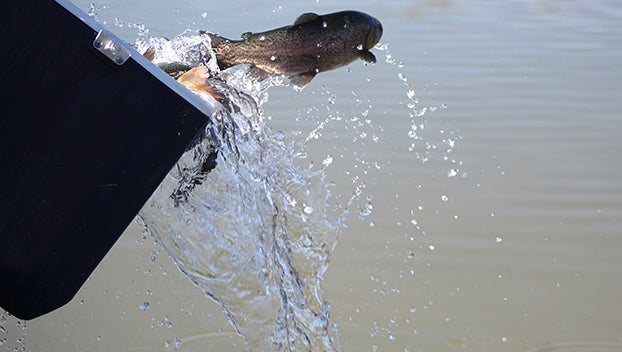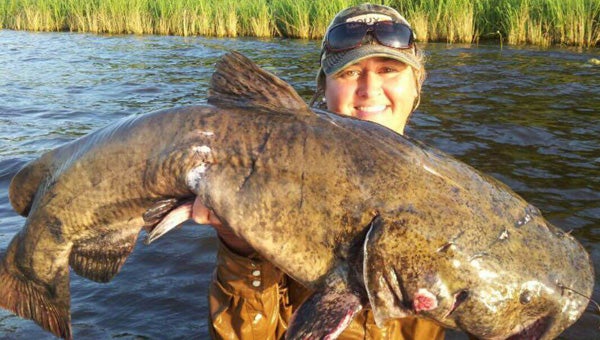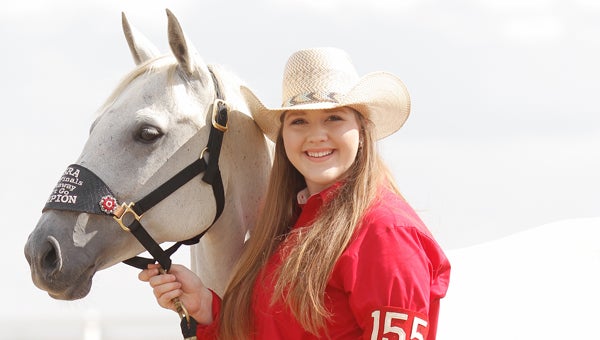Getting a bite in cold weather
Published 12:01 am Sunday, January 5, 2014
Cold fronts continue to drop water temperature down on the area lakes. Despite water temperatures in the upper and mid-40s, some people are still catching some nice white perch and bass.
You may not catch the numbers you catch during the warmer months, but the bites you get will usually be from large fish.
The bass and perch are developing eggs and putting on a lot of weight. The spawn could kick off as early as mid-February. Of course that will depend on water temperature, and this season is shaping up to be a late spawn year.
Right now, some fish are deep and some are shallow. The depth the fish are holding depends on the lake you are fishing. We have so many lakes and each lake fishes different. Deep water on one lake might be 10 feet, while deep on a lake just a few miles away might be 25 feet.
Even on the deep water lakes with good water clarity, there will still be a shallow bite. There are always some fish holding in thin water, but those fish are more likely to shut down when cold fronts pass while the deep fish will continue to feed behind a cold front.
I say feed, but it is more of a reaction bite than a feeding bite. It takes repeated cast for bass and an ultra-slow retrieve to catch fish in 40-degree water. That takes a lot of patience. It is really easy to fish right though an area that is holding fish and not get a bite. You have to slow down. If you put too much action in your lure presentation, you probably will not get a strike. With water temperatures this cold, the fish are practically lethargic.
The strike zone is narrow, so your lure needs to be that zone longer than normal.
I see some bass fishermen pick up crank baits this time of year. Crank baits are a cast and reel it in lure. You can stop and go and rip crank baits and draw a reaction strike or two from cold water bass, but you will not get many strikes on fast moving lures.
There is one exception to the crank bait in cold water deal. Bass will eat lipless crank baits in water as cold as 39 degrees. I say 39 because that is the coldest water I have fished and caught dozens of big bass on lipless lures, such as a Rat-L-Trap.
I am not sure why bass eat traps in cold water other than the lure is noisy and puts off a lot of vibration, which creates reaction strikes. Other lures will catch bass this winter, but this is the time of year when slow moving bottom lures will excel.
I use jigs with some type of trailer year round. Some people only use jigs in cold water. No other lure can imitate a baitfish and crawfish just by changing your retrieve on the same cast.
The Crawgator and Elk River jigs will rule the upcoming bass tournaments for the next few months. Some prefer light jigs. A 7/16th or 3/8th ounce jig is the most common jig weight, but I like an 11/16th or 3/4 ounce jig head. I want the jig to get to the bottom fast and stay there.
If you are fishing deep with a light jig, you will lose contact with the lure. Strikes in cold water are usually light. If you lose contact with the lure, you will not feel the strikes.
The white perch fishermen are catching fish, but it is hard to say where they are catching the perch. They send me pictures, but the background is always (intentionally) the bottom of a boat or in an ice chest. They know if they tell me where, I will tell all, so it is difficult to get reports from the perch fishermen and ladies.
Larto Lake is known as one of the best cold water lakes to catch big perch, so you cannot go wrong by fishing Larto this month. Lake Bruin has more white perch than some realize.
The locals that live on the lake are catching some big slabs. Lake St. John’s perch fishing is good for a few years then tapers off. We are due for a good year of perch fishing on St. John, so you may want to give it a try. Good luck to all and have a great New Year.





